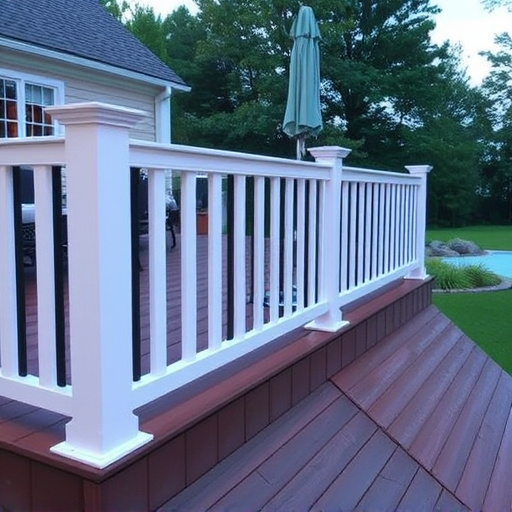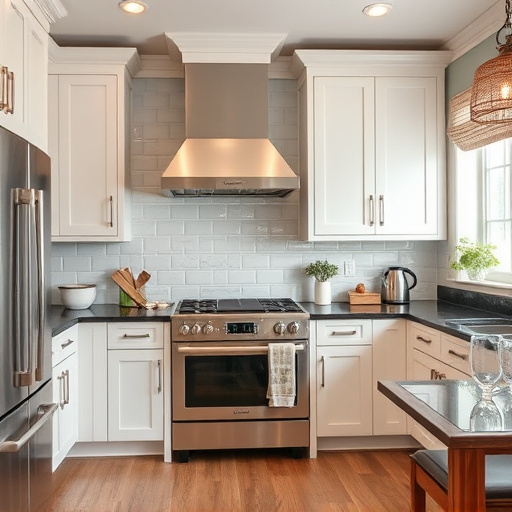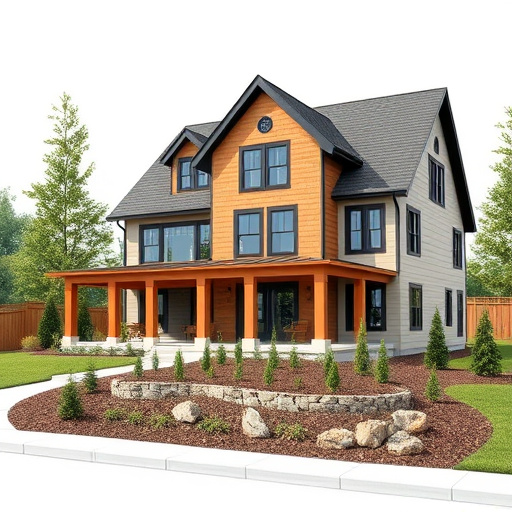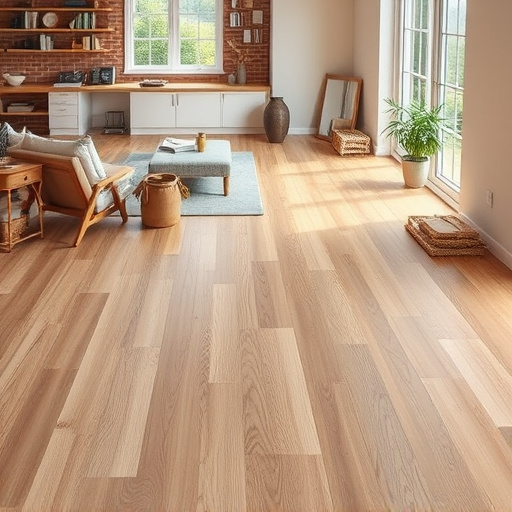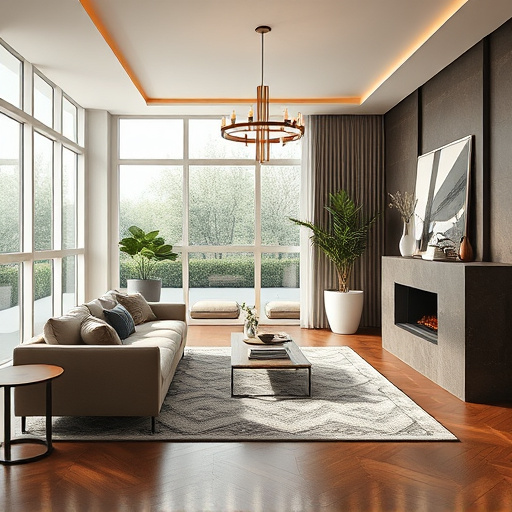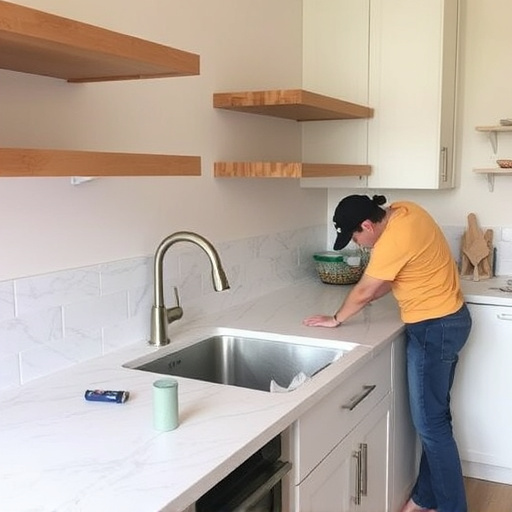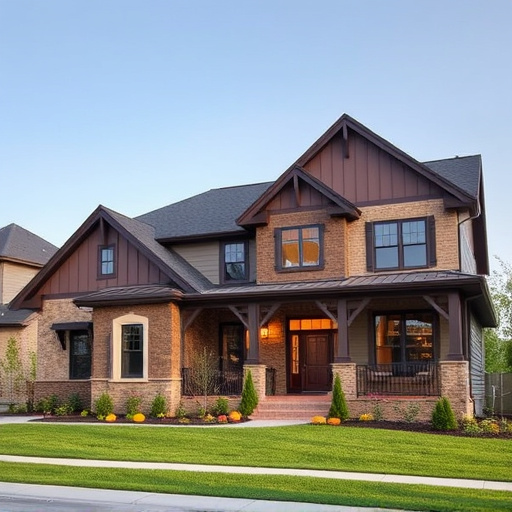Color is key in interior designs, with warm hues (red, orange, yellow) fostering energy and comfort for social areas, and cool tones (blue, green, purple) promoting calmness in bedrooms and offices. Color psychology influences emotions and cognitive responses, enhancing ambiance and creating harmonious interiors that cater to both communal energy and personal tranquility. Balancing warm and cool tones, along with neutral walls and accent colors, dramatically improves the overall experience in kitchen and whole house remodels.
Color psychology plays a pivotal role in shaping effective house design, influencing our emotions, perceptions, and overall well-being within spaces. This article delves into the intricate relationship between color and home aesthetics, offering insights on how to harness its power for optimal results. From understanding the emotional impact of warm vs. cool tones to strategically selecting hues that enhance functionality and flow, these principles guide interior designers in crafting harmonious and inviting living environments.
- Understanding Color's Emotional Impact on Spaces
- Integrating Warm vs. Cool Tones for Desired Ambiance
- Choosing Colors to Enhance Functionality and Flow
Understanding Color's Emotional Impact on Spaces

Color plays a pivotal role in shaping our emotional response to spaces, making it an indispensable tool for interior designers. When we enter a room, the colors on the walls, furniture, and decor instantly influence our mood and perception. For instance, warm hues like red and orange can evoke feelings of energy, excitement, and comfort, making them ideal choices for living rooms or dining areas where creating a welcoming atmosphere is paramount. In contrast, cooler tones such as blue and green are associated with tranquility and relaxation, suitable for bedrooms or home offices aiming to promote serenity and focus.
Understanding this emotional spectrum allows designers to manipulate color in various ways during a multiple room remodel or whole house remodels. For exterior painting projects, color selection is equally profound, affecting the ambiance of the entire property. Light, neutral shades can give a house a sense of openness and modern elegance, while bold, deep colors add character and drama. Thus, color psychology offers designers and homeowners a powerful way to transform spaces, catering to specific emotional needs and creating harmonious, inviting interiors.
Integrating Warm vs. Cool Tones for Desired Ambiance

In creating an inviting and harmonious atmosphere within any space, especially in interior designs, the strategic integration of warm and cool tones plays a pivotal role. Warm colors, including shades of red, orange, and yellow, evoke feelings of comfort, energy, and closeness, making them ideal for spaces where you want to feel at ease and be more social—like living rooms or kitchens during a cozy gathering. On the other hand, cool tones like blue, green, and purple create a sense of calmness and tranquility, perfect for bedrooms or home offices where relaxation and focus are key. For instance, a gentle shade of blue in a kitchen remodel can make the space feel refreshing and serene, enhancing the overall enjoyment during meal preparations.
When considering whole house remodels, this balance becomes even more crucial. Integrating warm and cool tones thoughtfully across different rooms ensures that each area serves its intended purpose effectively. A well-designed interior painting scheme can transform a house into a symphony of ambiance, where every room tells a story while catering to the emotional needs of its inhabitants—from the vibrant energy in communal spaces to the soothing calmness in private sanctuaries.
Choosing Colors to Enhance Functionality and Flow

When designing interior spaces, color psychology plays a pivotal role in enhancing functionality and creating a seamless flow throughout your home. Each shade evokes different emotions, influences mood, and can even impact our cognitive abilities. For instance, warm hues like red and orange stimulate conversation and energy, making them ideal for communal areas such as kitchens or living rooms, where you want to foster interaction and create a vibrant atmosphere. On the other hand, cool colors like blue and green promote calmness and relaxation, suitable for bedrooms or bathrooms aiming to provide tranquil retreats.
In terms of house design, choosing colors that align with the intended function can significantly impact the overall experience. During a kitchen remodel or whole house remodels, selecting soothing neutrals for walls and balanced accent colors for appliances and fixtures can create a harmonious, inviting space. Even minor changes in color, like swapping out old hardware for shiny new brass or bronze pieces, can instantly elevate the aesthetic appeal. Similarly, when considering floor replacements, darker shades can make rooms feel cozier while lighter tones open up spaces, influencing the perception of size and functionality.
Incorporating color psychology into house design is a powerful tool for creating spaces that not only look beautiful but also evoke positive emotions and enhance daily life. By understanding the emotional impact of colors, combining warm and cool tones effectively, and selecting shades to boost functionality, interior designers can craft homes that truly reflect their inhabitants’ personalities and preferences. This approach ensures that each room serves its intended purpose while creating a harmonious and inviting atmosphere.



